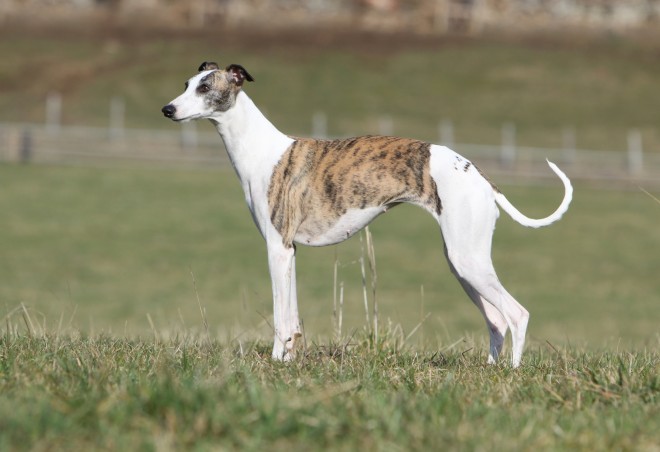
Three freshwater fish in your community tank are described here along with their characteristics, optimal tank conditions and feeding and breeding requirements.
Dwarf Pencil Fish - Nannostomus marginatus (Family: Lebiasinidae)
Behavior:
It is a bit timid and likes its fellow dwarfs so its better to have few of them in your aquarium. They will grow to about 3 cms when adult and are slow swimmers so you will have plenty of time to admire them!.
Water and Tank Conditions:
This fish will thrive well if there is plenty of swimming space and also a well planted area as we have said it is a bit timid. A water temperature range of about 24 degrees centigrade will be ideal.
Features and Colors:
There are differences between the sexes but are a bit subtle. The females are not as slim as the males and are not as brightly colored. There are three bands running along the sides of the fish. The middle one is gold colored with dark brown ones either side. The back is a golden brown with the body browny gray.
The fins are red around the perimeter and the bottom parts are also red. An unusual feature of the Nannostomus genus is that the horizontal bands will change shape when they are scared or at dusk time. They change to stripes that slope instead.
Feeding:
It will accept all sorts of food but remember that they have small mouths so the food will have to be a suitable size.
Breeding Conditions:
Like the Croaking tetra the pencil fish does not readily breed. A shallow depth of slightly acidic water, about 12 cms, is needed for the breeding tank and a temperature of about 24 degrees centigrade. Ideally you would have breeding trap and the female will be mated with two males.
Remove the fish once spawning has taken place. You will notice the eggs are scattered everywhere. It will be a couple of days before the fry hatch. Once hatched feed them infusoria initially followed by fine dry food and as they grow micro-worms, sieved daphnia and flaked foods.
Green Rivulus - Rivulus cylindraceus (Family: Cyprinodontidae)
Behavior:
The green rivulus is a hardy fish, peaceful and good at leaping so keep the cover on! It is is regarded as a bit of joker in the fish world due to its habit of taking up unusual positions and maintaining them for a while. It is best to keep these with fish around the same size.
Water and Tank Conditions:
Plant wise, a mixture of both submerged and floating varieties are needed. For the water, an average temperature of about 22 degrees centigrade will be alright although it can tolerate a fairly wide range.
Features and Colors:
The green rivulus, as its name suggests, is olive-green with spots that are darker green. It also has reddish spots near the back end. It is also known as the Cuban rivulus.
There are many species seen in aquariums from this genus and they all differ in color but their behavior and main features are the same. In particular they all have a 'false eye', which is in fact a spot located near the upper part of the peduncle fin.
Other species you will come across are the eye spot or ocellated rivulus (Rivulus ocellatus), the herring-bone rivulus (Rivulus strigatus), the yellow banded rivulus (Rivulus xanthonotus), the fire-tail rivulus (Rivulus milesi) and Hart's rivulus (Rivulus harti).
Feeding:
These fish become much more active at feeding time compared to their sometimes lethargic nature. In general they are not fussy about the food they are given.
Breeding Conditions:
The difference between male and female is easy as the female has the large rivulus spot and is not as brightly colored compared to the male. A thickly planted breeding tank at 26 degrees centigrade is required with two females for each male.
They breed easily and once the eggs have been scattered about, take the plants and fertilized eggs to a separate incubation tank. Give it up to fourteen days for the eggs to hatch and feed the fry with infusorias for the first seven or so days.
Hunchbacked Limia - Poecilia nigrofasciata (Family: Poeciliidae)
Behavior:
Also known as the Humpbacked limia and the Black-barred limia. They are a peaceful fish and the females will grow to a bit more than 6 cms. There are smaller species such as the Poecilia caudofasciata with the male less than 4 cms and the female less than 6 cms.
Water and Tank Conditions:
24 degrees centigrade is adequate.
Features and Colors:
They are called hunchbacked because the young fish exhibit an arched back, which becomes greater as they age. The other parameter that also changes with age is the color. The younger are recognized by their olive color, dark vertical bands and yellow underneath.
The older fish has iridescent green spots on the bands, the stomach has a dark border, the dorsal fin is bigger with spines becoming black. As in a lot of cases the female is duller than the male, color wise, not personality wise!
Feeding:
The main diet for the Hunchbacked limia is algae and other vegetable matter with the odd live meal thrown in (literally!).
Breeding Conditions:
Standard procedures for live-bearing fish should be followed but note that the fry are less easy to raise than usual and one tip is to put the breeding tank in a location where natural sunlight will fall upon it.
So there you have it, three more freshwater fish in your tank and more mouths to feed. Just make sure that you have enough tank space to cater for your new additions.
Paul Curran is webmaster at Fresh-Water-Aquariums-Guide.com and provides a fresh water aquariums information and care system. Get your FREE E-Course on how to set up and maintain a beautiful aquarium, have the healthiest, happiest fish around AND learn more about freshwater fish in a tank
 Dogs Die In Hot Cars - Why You Should Never Leave Your Dog In The Car Unattended
Dogs Die In Hot C
Dogs Die In Hot Cars - Why You Should Never Leave Your Dog In The Car Unattended
Dogs Die In Hot C
 How To Proceed If Your Pedigree Dog Is Diagnosed With A Hereditary Health Condition
How To Proceed If
How To Proceed If Your Pedigree Dog Is Diagnosed With A Hereditary Health Condition
How To Proceed If
 Walking The Dog....volunteer Dog Walking
Walking The Dog..
Walking The Dog....volunteer Dog Walking
Walking The Dog..
 Whippet Hereditary Health And Health Testing
Whippet Hereditar
Whippet Hereditary Health And Health Testing
Whippet Hereditar
 Lyme Disease In Dogs
Lyme Disease In D
Lyme Disease In Dogs
Lyme Disease In D
Copyright © 2005-2016 Pet Information All Rights Reserved
Contact us: www162date@outlook.com